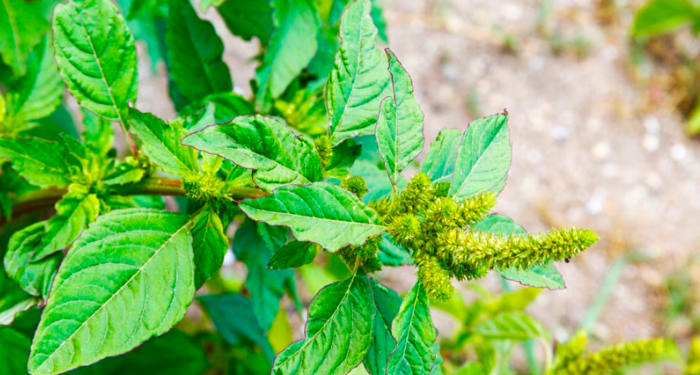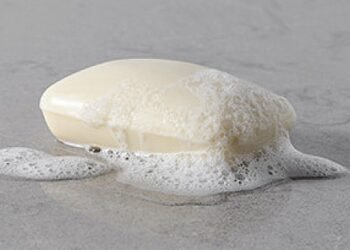Pigweed, often dismissed as an intrusive weed, is a common and resilient plant found in many backyards across the globe. Scientifically known as Amaranthus, it belongs to the Amaranthaceae family, a diverse group of plants that have been utilized by various cultures historically. Originating from the Americas, pigweed has proliferated extensively, now present in numerous other regions, including Europe, Asia, and Africa. This widespread colonization underscores its adaptability to varied environments and climates.
Easily distinguishable, pigweed exhibits broad leaves, typically green but can also take on a reddish hue depending on the species. The plant can reach heights between one to three feet, with a sturdy, fibrous stem that supports its growth. Flowering from late summer to early fall, pigweed produces small, greenish flowers that cluster densely at the tops of its stems. Its robust nature allows it to thrive in less-than-ideal soil conditions, making it a common sight in disturbed soils, gardens, and fields.
Besides its remarkable ability to endure and flourish in diverse environments, pigweed also has nutritional and medicinal properties that are often overlooked. Historical records indicate that various pigweed species have been used in traditional medicine and as a food source for centuries. However, pigweed is also classified as a weed, and the modern inclination towards more conventional crops has overshadowed its beneficial aspects. This oversight extends into contemporary horticulture, where its potential is often ignored amidst efforts to eradicate it from cultivated lands.
In essence, pigweed encapsulates a hidden resource, harbouring both nutritional and medicinal benefits that have yet to be fully realized and appreciated. This blog aims to shed light on these advantages, encouraging a reevaluation of what pigweed can contribute to our health and well-being.
Nutritional Profile of Pigweed
Pigweed, often regarded as an unwelcome garden invader, is surprisingly a powerhouse of essential nutrients. This inconspicuous plant boasts an impressive array of vitamins and minerals that are vital for maintaining good health. Particularly, pigweed is an excellent source of vitamins A and C, both of which play crucial roles in immune function and skin health.
Vitamin A, primarily found in the form of beta-carotene in pigweed, is essential for maintaining healthy vision, supporting immune function, and promoting proper cell growth. On the other hand, vitamin C is renowned for its antioxidant properties, helping in the prevention of chronic diseases and aiding in collagen synthesis, which is important for skin, cartilage, and bones.
In addition to vitamins, pigweed is rich in minerals such as calcium and potassium. Calcium is critical for strong bones and teeth, as well as proper nerve and muscle function. Potassium, meanwhile, helps in regulating fluid balance, muscle contractions, and nerve signals. Incorporating pigweed into your diet can thereby contribute significantly to your overall mineral intake.
The benefits of pigweed do not stop at vitamins and minerals; it is also a notable source of protein. Protein is fundamental for muscle repair, enzyme production, and overall cellular health. Compared to more commonly consumed greens like spinach or kale, pigweed holds its ground, often providing these nutrients in higher concentrations.
Furthermore, nearly all parts of the pigweed plant are edible. The leaves, stems, and seeds can be consumed and offer different benefits. The leaves can be cooked similarly to other leafy greens or used raw in salads, while the seeds can be ground into flour or used as a grain substitute. For maximum nutritional benefit, it is ideal to consume pigweed fresh and minimally processed.
In summary, by including pigweed in your diet, you can take advantage of its rich nutritional profile and integrate a versatile and nutrient-dense plant into your meals, enhancing your overall health and well-being.
Medicinal Uses and Health Benefits
Pigweed, often dismissed as a mere weed, holds a treasure trove of medicinal properties. Its anti-inflammatory, antioxidant, and antimicrobial attributes render it a powerful ally in natural health remedies. According to numerous scientific studies, pigweed (Amaranthus retroflexus) boasts a composition rich in essential nutrients and bioactive compounds, making it valuable for treating various ailments.
One notable benefit of pigweed is its anti-inflammatory properties. Research indicates that pigweed can significantly reduce inflammation, which is crucial in managing chronic conditions such as arthritis and inflammatory bowel disease. The presence of bioactive compounds like flavonoids and saponins contributes to its effectiveness in alleviating inflammation and associated symptoms.
Equally important is pigweed’s antioxidant capacity. Antioxidants are essential in combating oxidative stress, which can lead to cellular damage and increase the risk of chronic diseases, including cancer and heart disease. Pigweed is rich in vitamins A, C, and E, all potent antioxidants. Consuming pigweed can thus support overall health by neutralizing harmful free radicals in the body.
Pigweed also exhibits commendable antimicrobial properties. Studies have demonstrated its efficacy against a range of pathogenic bacteria and fungi. This makes it a useful natural remedy for infections and illnesses where antibiotics or antifungal medications are not desirable or available. Traditional remedies often include pigweed in preparations to treat skin conditions such as rashes and acne due to its ability to deter microbial growth and promote healing.
The practical use of pigweed in everyday life is quite straightforward. The leaves can be consumed fresh in salads or cooked, similar to spinach. Infusions and teas made from pigweed leaves are also popular for their health-boosting benefits. Topical use involves making poultices from the leaves to treat skin issues or incorporating the juice into skincare routines.
The humble pigweed, often overlooked, is indeed a potent herbal remedy. With scientific backing and centuries of traditional knowledge underscoring its medicinal value, it stands as a testament to nature’s hidden treasures waiting to be rediscovered.
Sustainable Harvesting and Recipes
Harvesting pigweed sustainably is crucial to ensuring its long-term viability and maintaining the health of your backyard ecosystem. Begin by identifying pigweed accurately: it typically has green, ovate leaves with small clusters of green flowers. Use reliable sources or consult with a local botanist to avoid misidentification. When foraging, opt for pigweed plants that are far from roads and areas likely treated with pesticides or herbicides to avoid contamination.
Follow best practices to minimize environmental impact. For example, only take what you need and leave the roots intact to promote regeneration. Focus on picking mature leaves and stems, leaving younger plants to grow fully. This method ensures that pigweed continues to thrive while you enjoy its myriad health benefits.
To incorporate pigweed into your diet, there are several delightful recipes to try. Pigweed can be a delicious and nutritious addition to various dishes, such as salads, soups, and smoothies. Here are a few simple recipes to get you started:
1. Pigweed Salad: Rinse a handful of young pigweed leaves and mix them with your favourite salad greens. Add cherry tomatoes, sliced cucumber, and red onions. Top with a dressing made from olive oil, lemon juice, salt, and pepper for a refreshing and nutrient-dense salad.
2. Pigweed Soup: Sauté chopped onions and garlic in olive oil until they are soft. Add diced potatoes, carrots, and celery, along with vegetable broth. Stir in a generous handful of chopped pigweed leaves and let the soup simmer until the vegetables are tender. Season with salt, pepper, and your favourite herbs for a hearty, immune-boosting meal.
3. Pigweed Smoothie: Blend a cup of washed pigweed leaves with a banana, a cup of frozen berries, and a splash of almond milk. This vibrant smoothie is an excellent way to start your day with a dose of vitamins and antioxidants.
By following these sustainable foraging practices and incorporating these simple recipes into your routine, you can enjoy the health benefits of pigweed while nurturing the environment. Encouraging responsible harvesting not only safeguards this valuable plant but also enriches your culinary experiences.












